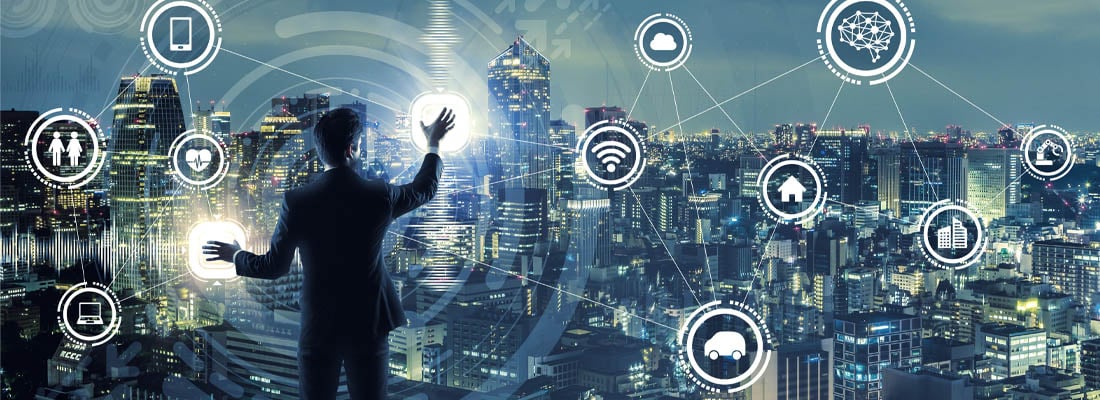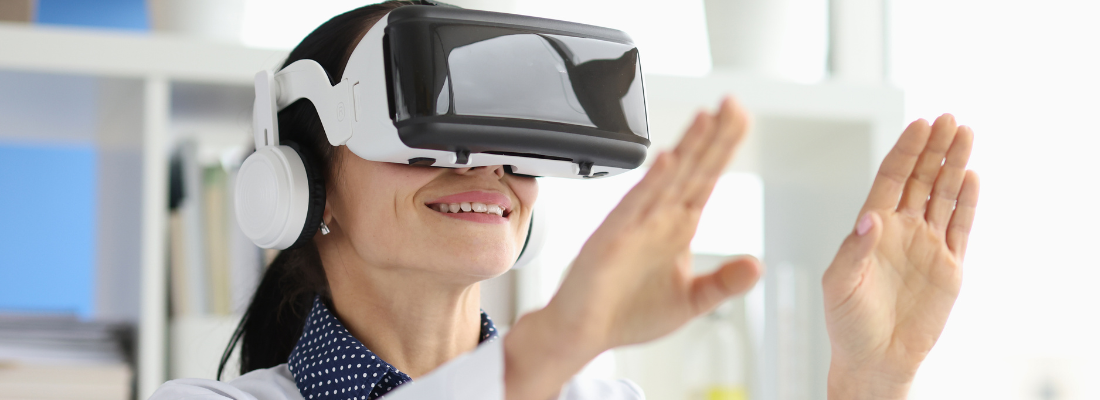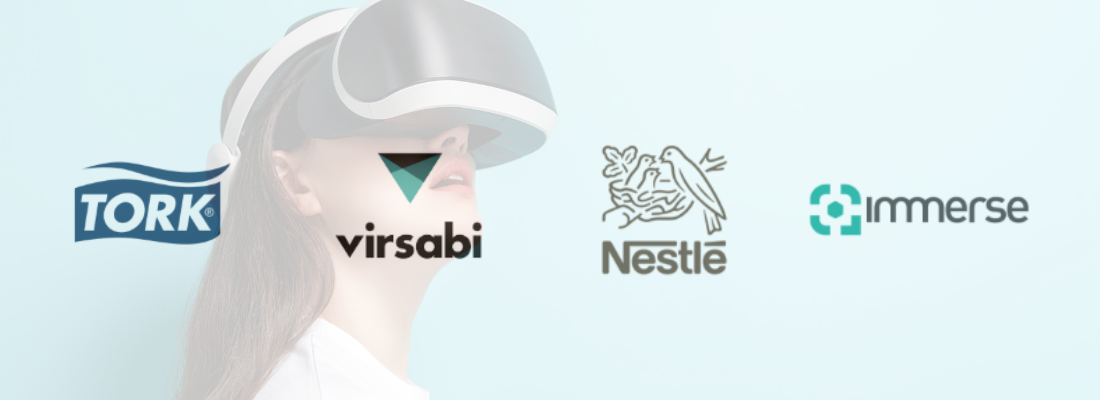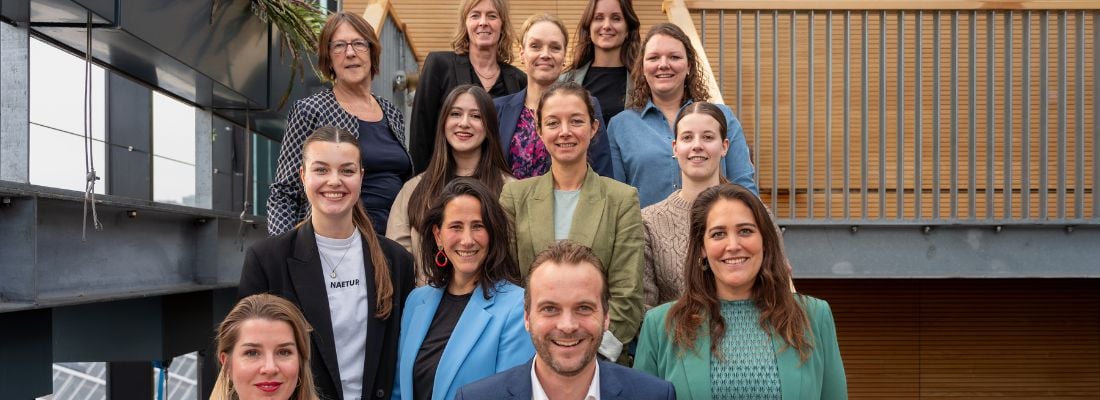Smart building prospects and challenges for facility managers
Lighting, ventilation or heating that responds to presence, smart security software or the application of sensors: in the age of Internet of Things, almost all of our devices will be linked online. More and more attention is also being paid to integrated building automation in renovation and new construction of office buildings. These buildings where smart technology is applied are called Smart Buildings. In this article, we will take a closer look at what Smart building exactly entails and what this means for the Facility Manager today.
What is Smart Building?
A smart building is a building in which smart, innovative techniques have been integrated that improve the working and living environment. The efficient design and all the smart techniques applied therein ensure that the users can function and perform optimally. This makes a smart building the ideal environment for "the new way of working". If the users make use of all possibilities that facilitate their work, the performance of the collective will improve. Smart buildings are therefore the ideal environment for making task-oriented work in flexible workplaces a success.
“For a building to be considered ‘smart’, it should use technology to deliver useful, consistent, user-focused experiences as well as space and energy efficiencies.”
Smart innovative techniques not only have a positive effect on the performance of people in the workplace. They also offer new possibilities for the management of the building itself, for example in the field of energy management, climate, light and efficient use of space. In this way, all results of innovative techniques in a smart building contribute to the total return of the organisation. A smart building is not an end in itself but a means to achieve the objectives of the organisation.
Smart buildings are a new phenomenon in which developments take place at lightning speed and the possibilities are expanded daily. What is smart today may be outdated by an innovation tomorrow.
Can every building be smart?
In reality, there is a big difference between "smart" technology integration and simply "being connected". The two words have been used relatively interchangeably due to the lack of standardised terminology.
Connected buildings often incorporate technologies that are interconnected, often for the benefit of owners and operators rather than residents - think lights that turn off automatically after 60 seconds when no movement is detected to save energy, leaving people in darkness and resulting in the inevitable arm swings and star jumps to restore functionality. Smart buildings take a more integrated approach by looking at the big picture - what people are trying to achieve within the building - and working down so that every single device and system is considered. This results in more useful results, such as personalising a user's experience so that it can be more productive, or managing room temperature more holistically by responding to the position of the sun and the weather that day rather than simply heating on a set turn off time.
The problem with many existing buildings is that current building technology and building-related systems often operate on their own platforms. It is therefore difficult for all those systems to communicate and communicate. If you want systems such as lighting, heating, ventilation and air conditioning (HVAC), as well as security and audio-video equipment to work together smoothly, it is essential to transform into one IP system that is the standard for connecting ICT and building related systems .
A single infrastructure (the base), based on the IP protocol, allows us to reduce the complexity of compartmentalised systems. Other benefits: It can reduce the risk of a security breach and offers more opportunities to save energy.
That is why it is important not to base the strategy (only) on the technology, but to link it to concepts such as sustainability, cooperation, challenging and inspiring, building use and occupancy or safety. For example, the pursuit of a sustainability ambition can be achieved with the use of Smart Building technology for the climate system, the lighting system or with appliances that use little energy. By creating the strategy in this way, a clear picture is created for all parties involved towards the realisation of a Smart Building.
What can a Facility Manager do with a Smart Building?
With a clear platform as a basis, it is possible to combine functions in a Smart Building and integration of your own devices (tablets, smartphones) and physical security into building-related (facility), management and technical installation systems is possible. Incidentally, integration must add value and at the same time not jeopardise the reliability and security of the systems.
By switching from the current situation (which exists in most buildings) to a situation in which numerous building-related systems work together and communicate via an unambiguous IP platform, benefits can be achieved, such as:
- Mapping inefficiently used spaces;
- Up-to-date insight into cleaning activities and areas to be cleaned;
- Insight into the catering needs, air quality, waste flows and parking situations;
- Easy to request a facility service or product;
- Lower operational and maintenance costs (due to better / clear installations);
- Supporting the sustainability and energy neutral policy;
- A reliable platform for the provision of tenant services;
- Future facilities and faster adoption of technological innovations
- Lower integration costs by combining one IP infrastructure;
- A better employee and visitor experience;
- More opportunities to respond to employee / visitor needs and critical events;
Realising a Smart Building is easiest with new construction, but existing construction (or renovation) can also benefit from smart and intelligent applications. For example, an extension of WiFi access points to implement location-based services or the use of sensors to measure the temperature or CO2 content of a room.
How will Smart Buildings improve cleaning standards?
The trend towards smart cleaning started a few years ago with all kinds of targeted applications: measuring how often a toilet has been used so that you clean it in time, but not too often; smart cleaning trolleys that indicate when certain cleaning products need to be replenished. It is now time for the next step: an integrated approach to smart cleaning in a Smart Building.
Sensors and connectivity have become smaller and cheaper. This means that we can apply them more easily. The growth in the number of "connected" devices - IOT - in cleaning and landscaping is enormous. The cleaning and hygiene industries are moving towards a new era. An era that is less characterised by smart sensors, but more by the data generated by it.
As the IoT is integrated into more devices, the natural movement is towards a digital ecosystem powered by a complete network of connected devices, systems and cognitive computers. The combination of these technologies makes smart buildings a reality, making autonomous cleaning the obvious choice. As buildings become smarter and technology becomes even more integrated into consumers' daily lives, it makes sense to use machines that know when, where and how much to clean, while collecting and combining data from different sensor points in the building. These autonomous machines will be able to scan the needs of buildings and people through data and a quick scan of the building environment, ensuring cleaning and maintenance at all times.
Autonomous cleaning offers the possibility for a cheaper, more sustainable operation. As IoT and smart buildings continue to grow, it is important that the industry keeps pace to drive more efficient operations, lower costs and more personalised environments.
Five examples of Smart Cleaning
Smart cleaning provides more efficiency and transparency for service providers such as contract cleaners and landscaping companies. A couple of examples how to implement smart technology in the day-to-day cleaning activities:
- With a people counter you can measure the occupancy in the rooms;
- With smart bin sensors you control the filling speed of a dustbin;
- Smart Washroom sensors notify you when you need to clean;
- With sensors, you have a cheap and scalable solution that measures when a cleaner is in an important room.
- RFID Tracking allows you to manage your assets such as clothing, mops or other important products.
Keep up with the latest innovations
Driven by the opportunities that new technologies bring; great things are already happening in the industry. Sign up for the Interclean newsletter and be the first to know about the newest industry developments.
Share your stories with us!
Do you have an innovation or interesting news you would like to share with the professional cleaning and hygiene industry? The Interclean website and social media channels are a great platform to showcase your stories!
Please contact our press department interclean@rai.nl.
Are you an Interclean exhibitor?
Make sure you add your latest press releases to your Company Profile in the Exhibitor Portal for free exposure.
Receive the best newsletter on cleaning & hygiene - straight to your inbox!
We promise never to send you spam and you can unsubscribe at any time!








